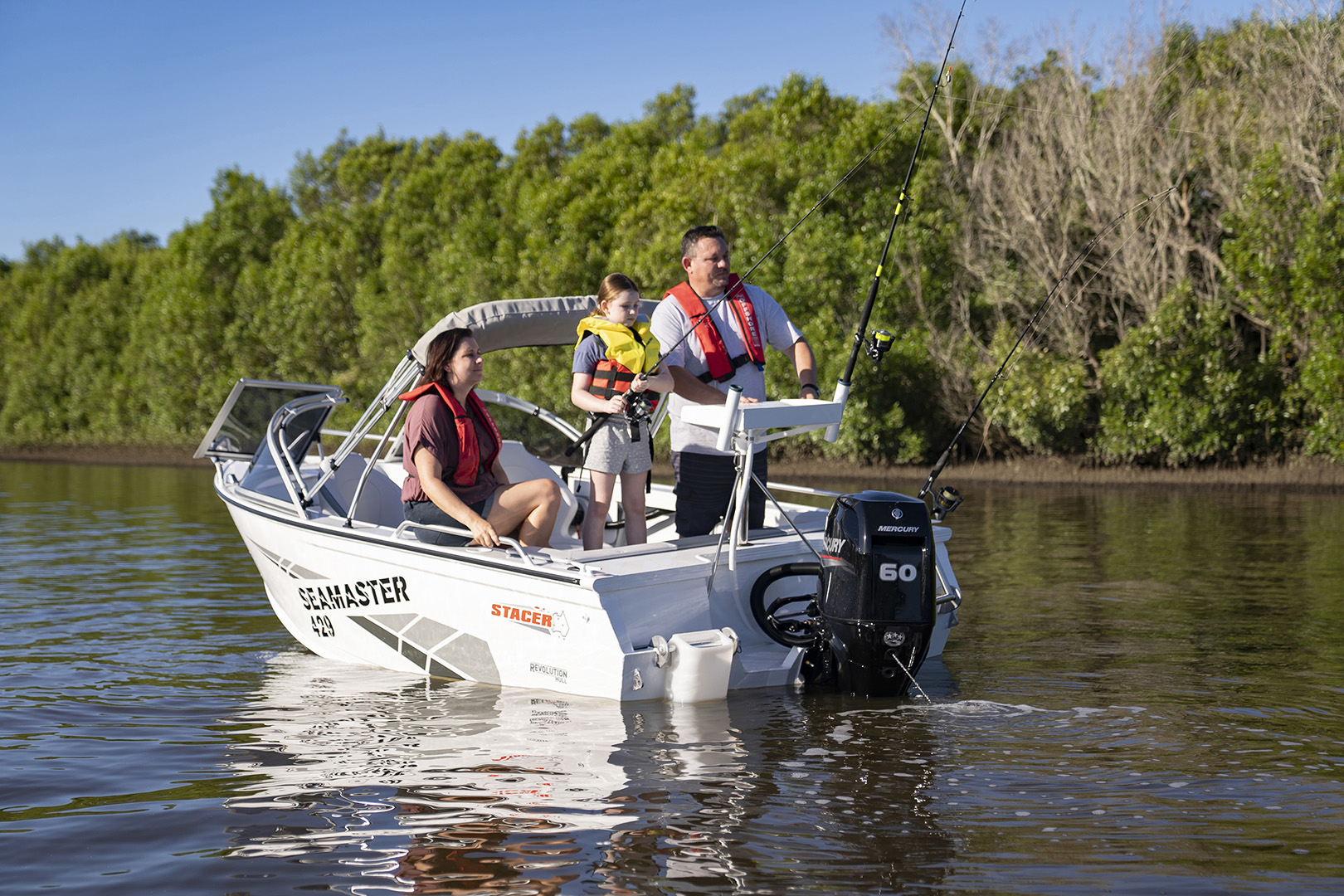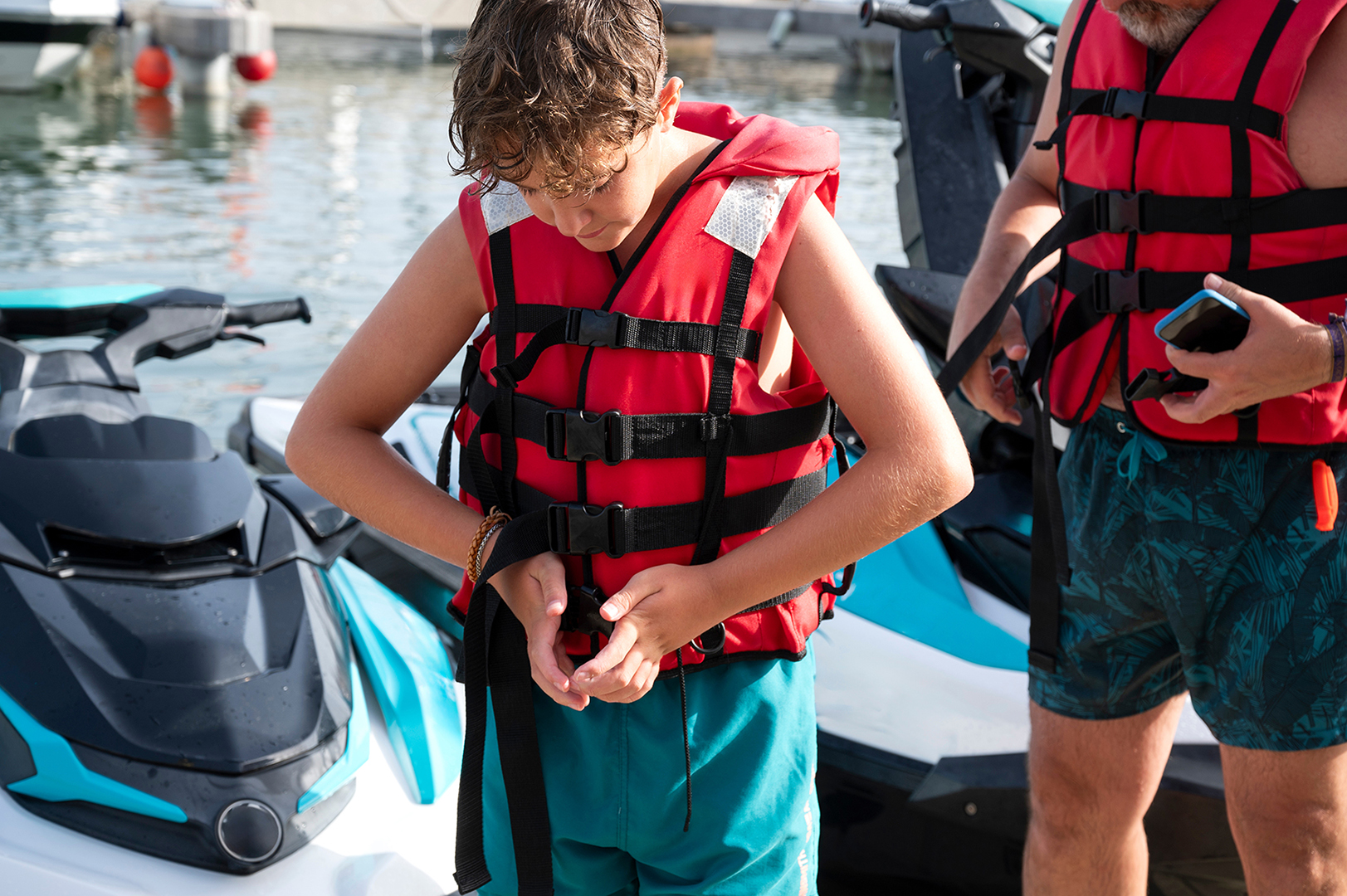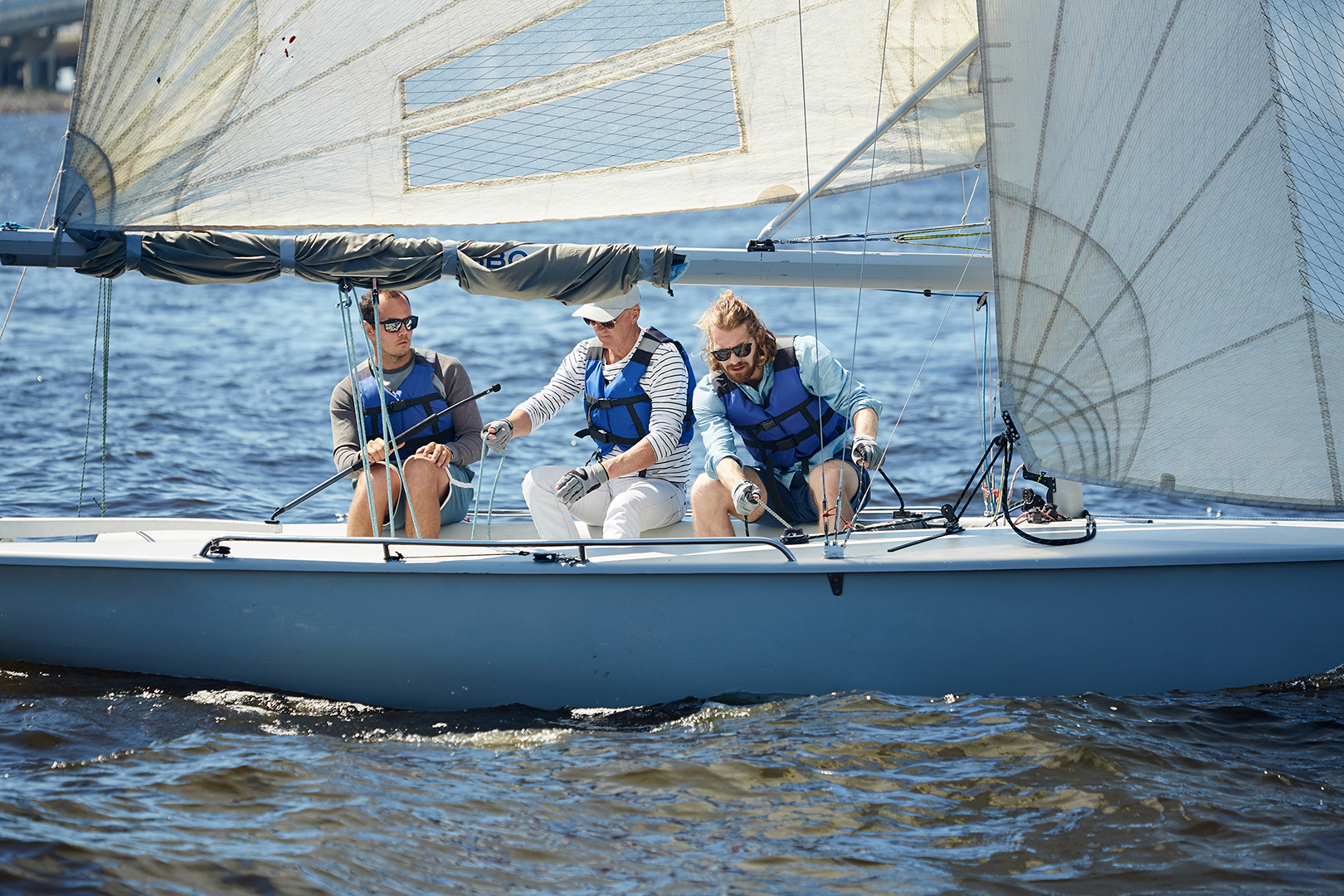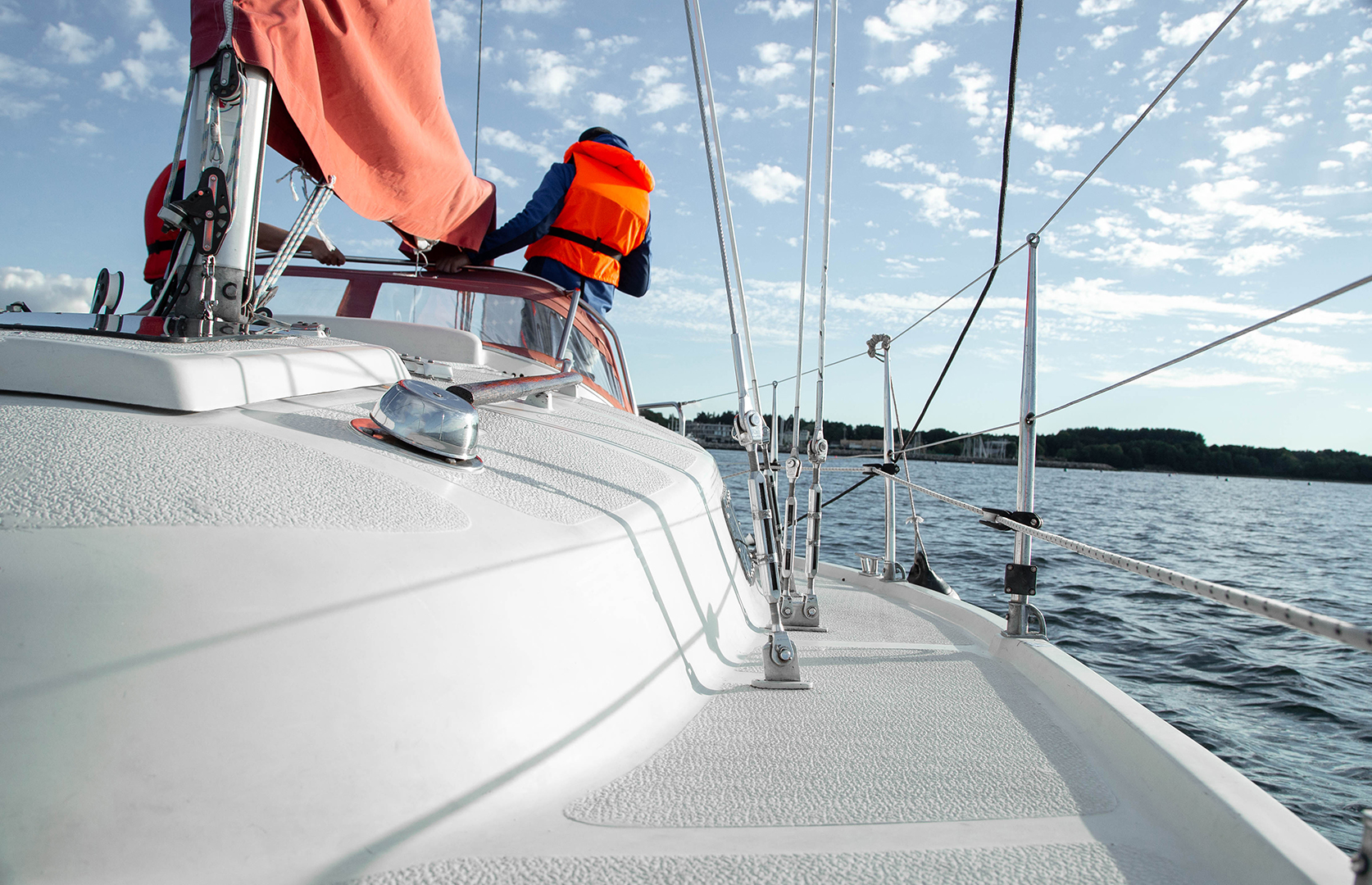
Four boating safety experts share some key advice about PFDs to help you stay safe on the water

Adam Smith, President of the Boating Industry Association and Owner of Australian Boating College Sydney.
- You must always have the correct type of Personal Flotation Device (PFD for short) for your area of operation and for each person on board your vessel at any given time.
- Foam PFDs are best suited to activities where you’ll possibly get wet or go into the water, like PWC riding, tow sports or dinghy sailing. Foam PFDs are also generally recommended for smaller children over inflatable PFDs.
- Inflatable PFDs are suitable for wearing as a precaution when you are not planning to go into the water, such as during normal boating activities. The right inflatable PFD will be so comfortable you’ll forget you’re wearing one. I’ll frequently go to move the car to retrieve the boat and realise I’m still wearing my PFD while sitting in the car!
- It’s important to maintain your inflatable PFDs to ensure they work when needed. The best way to do this is to store them correctly and service them regularly or as per the manufacturer’s instructions. Most require servicing annually in everyday operations. You can take them to the manufacturer or their service agent, or if the manufacturer permits, you can service the PFDs yourself.
- If you’re going to self-service your PFDs, seek out the instructions and procedure from the manufacturer, and make sure you follow the instructions exactly. As a general rule, servicing your PFDs is pretty straightforward. You’ll usually only need three things:
- The instructions from the manufacturer and all associated documentation.
- A set of digital kitchen scales to weigh the CO2 cylinder.
- A pen suitable to record the service date on the PFD where instructed.
- The service process is similar for most PFD brands. As a general rule, the process would be:
- Visually inspect the PFD from the outside. Look for wear and tear and any damage that may affect its operation.
- Open the PFD covers to expose the inflatable bladder. Use the tube to inflate the bladder manually.
- Leave the bladder inflated for 24 hours. If it stays inflated correctly, the bladder is good. If not, send it to the manufacturer for testing or repair or dispose of the PFD entirely.
- Check that the reflective tape is in good condition and that any other accessories or equipment included (eg: whistle, strobe light) are present and operational if needed.
- Unscrew and remove the CO2 cylinder. Use the scales to ensure its weight is at least the minimum weight stamped on the cylinder. If it’s underweight, replace it.
- Open the valve in the manual inflation tube to deflate the bladder. Make sure it’s wholly emptied, or you may not be able to properly repack the lifejacket.
- Record the service date on the service record panel if this is on the bladder.
- Repack the bladder as per the manufacturer’s instructions; don’t just stuff it in there, or it may not deploy correctly when activated.
- Make sure the activation cord is accessible from outside the cover.
- Complete any service record paperwork and store this somewhere you can readily access it if needed.
- If you’re at all unsure of or not confident with the process of servicing your PFDs yourself, then play it safe and have them serviced by an authorised service agent or the manufacturer.
- Even if you are confident with self-servicing your PFDs, routine professional servicing is also typically required or recommended. The frequency for professional servicing can vary between brands, however most commonly, it’s every two-three years that they require professional servicing to comply.

Visit abcboating.net.au and bia.org.au
Must-visit website: lifejackets.org.au
“Go to lifejackets.org.au for everything you’ll need to know about PFDs,” advises Smith. This online resource created by the Australia and New Zealand Safe Boating Education Group features advice about “choosing the right PFD, finding a service agent, self-servicing instructions and videos, and guidance on the rules and requirements for PFD wear for every state in Australia and New Zealand,” says Smith. “You can even sign up for reminders to service your PFDs.”

Glenn Sullivan, Monaro Region Zone Duty Operations Manager with Marine Rescue NSW.
As I always say, a life jacket can’t save you if you’re not wearing it. But let me take this one step further: a Personal Flotation Device (PFD) that is not properly serviced and maintained may, when needed, also be a weight around your neck.
- It is imperative to follow the manufacturer’s service and care instructions. There are a number of different PFD types and the inflatable style is becoming more popular, as you can wear them comfortably with no restriction to movement.
- Here is a quick guide on what to check before donning a PFD for a day on the water. These general rules apply to all styles:
- Check the overall condition; look for white/green stains that could be from salt or other corrosives.
- Check the condition of the straps; ensure they are not frayed or torn. Look at the material holding the buoyancy/floatation material inside, making sure there aren’t any holes or wear marks.
- If you have an inflatable PFD, open the zip if accessible and inspect the gas cylinder, checking that it is secure and that there is no corrosion around the cylinder. When zipping the jacket back up, make sure the pull cord for inflation is out and ready to deploy if needed.
- If you are unsure about this process, take it to an authorised service agent and get them to show you how to conduct a self-check.
- Other safety tips and servicing requirements can be sought from your local governing agency in your state or territory.
- Please remember, as the master of the vessel, you must ensure that all persons on board have access to an in-service PFD that fits, is in good condition, and that all passengers don the PFD when instructed by the skipper of the vessel.
Visit marinerescuensw.com.au
Ian Beard, Training Officer for the Marine Radio Communications Support Group and Media Officer for Volunteer Marine Rescue WA.
Summer sees a huge increase in recreational boating activity. Unfortunately, this also coincides with an increase in boating incidents, with a considerable number of these sadly having a fatal outcome. One vital thing that can help reduce these fatalities is by simply wearing a Personal Flotation Device (PFD).
- PFDs must be fitted correctly and maintained appropriately. Any PFD you purchase, or wear, should adhere to the proper safety standards and regulations in your region.
- PFDs should be worn by everyone in open water environments. This includes when you are boating, sailing, using watercraft such as canoes, kayaks, and paddleboards and also when fishing (including rock fishing). Everyone aboard your boat (including your dog!) should be wearing a PFD that fits properly and complies with current regulations. They only work if they are worn.
- If an accident happens, a PFD is of no use if is stowed away and it is difficult, if not impossible, to fit one if in the water. Just because a person is a good swimmer doesn’t mean they don’t need to wear a PFD. If an accident happens, they may need to spend a long time in the water awaiting rescue, have to swim a long distance to shore, or they may be injured or unconscious.
- PFDs are designed to keep the wearer afloat in the water, greatly increasing their likelihood of survival. In an emergency, PFDs allow more time to be rescued, reduce the onset of exhaustion and hypothermia. Treading water and swimming use massive amounts of energy and the body loses an enormous amount of heat, particularly if you have been in the water a long time and get tired. Some types of PFDs can also help to roll a person onto their back to keep their face out of water, even if they are unconscious.
- Distinct types of PFDs are available, depending on what on-water activity is being conducted and whether you are within sheltered waters or open sea. For recreational boaters there are basically four classifications. These can be either inflatable or non-inflatable types and are classified according to their intended use and buoyancy levels. Other lifejackets are designed for specific purposes for Safety of Life at Sea (SOLAS), these are usually intended for use on seagoing ships.
- When choosing a PFD for a child it is particularly important that the correct size of lifejacket is chosen, and not one that they will ‘grow into.’
- The rules and safety regulations relating to the use of PFDs vary from state to state in Australia, depending on the type of activity you are undertaking, and the age of the participants. It is important that you know and understand these rules and regulations, and wear the appropriate PFD for your location. These regulations also extend to the correct maintenance of PFDs and the standards to which they are manufactured.
Here’s a quick PFD safety checklist:
- Make sure there is a PFD for each person travelling aboard.
- Make sure everyone wears a PFD when travelling on the water in a boat or watercraft.
- Make sure each PFD fits everyone properly, including children.
- Practice getting in and out of the water while wearing a PFD.
- Make sure PFDs are maintained properly, especially inflatable models.
Visit vmrwa.org.au
Paul Field, Marine Loss Adjustor and Coastguard New Zealand Senior Master.
In my joint capacities as search and rescue crew and as a Marine Loss Adjuster, Personal Flotation Devices (PFDs) are a regularly discussed topic. This year in New Zealand we have seen on-water fatalities occur where the tragic loss of life may have been avoided. For this reason, we continually try to reinforce PFD safety messages to our boating population. Sadly, no matter how often we try to emphasise the importance of wearing a PFD, fatalities continue to occur from people not wearing them.
As a boating community we want everyone to come home safely at the end of an outing, so we need to keep this message clear and widespread: wear a PFD and please don’t become a tragic statistic! There are many different types of PFDs on the market and here are some important things to consider:
- Ensure there is an adequate-fitting life jacket for everyone onboard the craft. This is especially important when the jacket is for a child. A correctly fitted jacket will prevent small children from slipping out of the jacket, many have a crotch strap which needs to be worn and correctly adjusted for the individual.
- Consider the location of your boating as inland waterways and rivers see a different need to offshore or coastal conditions.
- Consider the type of activities being undertaken as a buoyancy vest used for wakeboarding or waterskiing for example is not necessarily suitable or appropriate for a craft operating on a choppy coastline or in exposed waters.
- Consider whether a self-inflating PFD, being less bulky, would be more appropriate for when onboard your craft. One of the common complaints we hear is that foam-type life jackets are too restrictive and uncomfortable hence the development of these PFDs which provide a more slimline fit.
- There are many different features with so many brands of PFDs on the market and we would encourage you to discuss this with your service agents to find the most practical, suitable and comfortable options for you.
- Check local regulations as there may be legal requirements to wear a lifejacket. In Auckland, for example, it is a legal requirement for all onboard craft of less than 6m to be wearing a correctly fitted PFD. For craft over 6m, it is a requirement to carry a correctly fitting jacket for everyone on board. However, we still advocate wearing a PFD at all times, as once you’re in the water it is difficult to put one on. Even more so in choppy, cold conditions.
- In a controlled environment consider practicing inflating a PFD so it becomes a familiar part of your boating attire and equipment. In an emergency it is too late to figure out how the PFD works.
- The PFD should be on your outer layer. This may seem a little obvious, but we have seen some boaties put a windproof jacket over the top of inflatable PFDs.
- If your craft is a larger vessel and you consider wearing a PFD at all times impractical, be mindful of where the PFDs are stowed. Ensure they are accessible in the event of an emergency. Often we see them stored under seats or bunks inside vessels which, in the event of a fire or collision or other emergency, make them inaccessible to reach.
- Be mindful of expiry dates for PFDs, and regularly check the CO₂ cylinders on your inflatable PFDs. Exchanging a corroded or expired cylinder is an easy process and your service agents will be able to explain how to do this.
- Consider the weather and overall conditions. Never be afraid to don a PFD if conditions are deteriorating. Better still, wear them from the moment you step on board.
Visit coastguard.nz
For boating news, features and interviews, subscribe to Nautilus Marine Magazine here.
